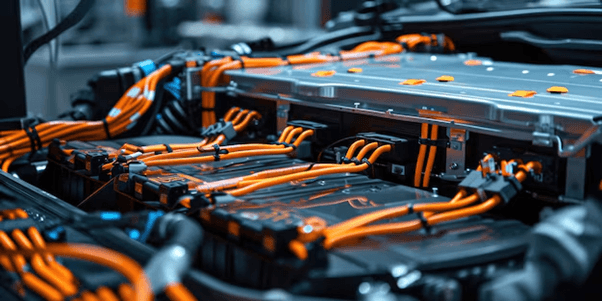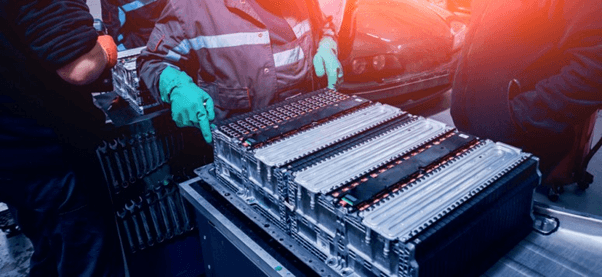When it comes to powering industrial equipment, choosing the right battery can make all the difference. Whether it’s for forklifts, backup generators, or other essential machinery, the type of battery you use affects everything from maintenance to performance and cost-effectiveness. Two of the most commonly used battery types in industrial settings are gel batteries and flooded batteries. But which one is the best for your business?
In this blog, we’ll dive into the advantages of Gel vs. Flooded Batteries in industrial applications. We’ll also look at how Industrial Batteries Accessories Ltd.—a trusted supplier in Ontario—can guide you in choosing the right battery for your needs.
Let’s get started by exploring these two battery types in detail.
What Are Gel and Flooded Batteries?
Before we compare gel and flooded batteries, let’s first understand what they are and how they work.
- Gel Batteries
Gel batteries are a type of sealed lead-acid (SLA) battery, where the electrolyte (the substance that helps the battery store and release energy) is suspended in a gel, not in a liquid form. This makes gel batteries maintenance-free, more durable, and safer to use. These batteries are commonly used in applications where reliability and low maintenance are crucial. - Flooded Batteries
Flooded batteries, also known as wet cell batteries, are the traditional type of lead-acid battery. These use a liquid electrolyte made of sulfuric acid and water. Flooded batteries require more maintenance, including checking water levels and cleaning terminals to ensure they work properly. These are usually the more affordable option upfront.
Gel vs. Flooded Batteries: Key Advantages

To help you decide which type of battery is right for your industrial needs, let’s look at the key advantages of each one.
1. Maintenance
| Feature | Gel Batteries | Flooded Batteries |
| Maintenance Needs | Low maintenance; no need for regular refills | High maintenance; requires regular water refills |
| Electrolyte Levels | No need to refill water | Needs regular water topping up |
Gel Batteries: The standout feature of gel batteries is that they are maintenance-free. You don’t need to check or refill the electrolyte levels, which means you can focus more on running your business and less on battery upkeep. This makes gel batteries a great choice for industries that cannot afford downtime or have limited staff available for regular battery maintenance.
Flooded Batteries: Flooded batteries require more attention. You need to regularly check the water levels and refill them to prevent damage. While this might not seem like a big deal, it adds up over time, especially for businesses with large fleets of equipment or machinery that rely on these batteries. Flooded batteries also require more cleaning to keep the terminals free from corrosion, which adds to your maintenance workload.
2. Durability and Lifespan
| Feature | Gel Batteries | Flooded Batteries |
| Lifespan | Longer lifespan; can withstand deep discharges | Shorter lifespan, especially with deep discharges |
| Vibration Resistance | More resistant to vibration and shock | Less resistant to vibration |
Gel Batteries: Gel batteries are known for their longer lifespan and ability to withstand deep discharges better than flooded batteries. The gel electrolyte prevents the battery from drying out or becoming damaged in extreme conditions, making it more durable overall. This is especially useful in industrial applications where equipment is used frequently and needs to be powered consistently.
Flooded Batteries: Flooded batteries are not as durable as gel batteries. Over time, they tend to wear out faster, especially when subjected to deep discharges, which occur when the battery is used for a long period without recharging. Additionally, flooded batteries are more vulnerable to damage from vibrations, making them less ideal for environments with heavy machinery or equipment that experiences a lot of movement.
3. Cost
| Feature | Gel Batteries | Flooded Batteries |
| Initial Cost | Higher upfront cost | Lower upfront cost |
| Long-Term Cost | Lower long-term cost due to less maintenance | Higher long-term cost due to more maintenance |
Gel Batteries: While gel batteries come with a higher initial cost, they tend to be more cost-effective in the long run. Since they require less maintenance and last longer, they can save you money over time. You won’t need to replace them as often, and you’ll spend less on maintenance and repairs.
Flooded Batteries: Flooded batteries are cheaper upfront, making them a more attractive option if you’re working within a tight budget. However, you’ll likely spend more over time on maintenance, water refills, and frequent replacements, especially if you’re in a high-demand industrial environment.
4. Temperature Performance
| Feature | Gel Batteries | Flooded Batteries |
| Cold Weather Performance | Performs well in cold conditions due to gel’s stability | Can freeze in extreme cold conditions |
| Temperature Sensitivity | Less affected by temperature changes | More sensitive to temperature fluctuations |
Gel Batteries: Gel batteries are better suited for environments with extreme temperatures. The gel electrolyte is less likely to freeze in cold weather or evaporate in high heat, giving gel batteries an advantage in colder climates or industries where temperature control is difficult.
Flooded Batteries: Flooded batteries are more temperature-sensitive. In very cold conditions, the liquid electrolyte can freeze, which can lead to battery failure and even damage the internal components. This makes flooded batteries less reliable in certain climates or industrial environments where temperatures fluctuate.
5. Safety
| Feature | Gel Batteries | Flooded Batteries |
| Risk of Leakage | No leakage risk due to sealed construction | Higher risk of acid leakage or spills |
| Gassing Risk | Less risk of harmful gases | Risk of gassing during charging |
Gel Batteries: Gel batteries are sealed, so there is no risk of acid leakage or harmful fumes. This makes them a safer option, especially in environments where there’s a risk of exposure to harmful chemicals or gases.
Flooded Batteries: Flooded batteries carry a greater risk of leakage and the possibility of releasing toxic gases, especially during charging. This makes them less ideal for workplaces with limited ventilation or where safety is a high priority.
Gel vs. Flooded Batteries: Which One Should You Choose?

Deciding between gel and flooded batteries depends on your specific needs and priorities. Here’s a quick guide:
● Choose Gel Batteries if:
- You want low maintenance and less downtime.
- You need a longer-lasting battery that can withstand deep discharges.
- Your equipment experiences vibrations or rough conditions.
- You work in extreme temperatures.
- Safety and reliability are top priorities for your business.
● Choose Flooded Batteries if:
- You have a tight budget and are looking for a cheaper option upfront.
- You don’t mind performing regular maintenance.
- Your equipment operates in a controlled, temperature-stable environment
- You can manage the risks associated with gassing and leakage.
FAQs
1. What’s the difference between gel and flooded batteries?
Gel batteries use a gel electrolyte that makes them maintenance-free and more durable, while flooded batteries use a liquid electrolyte and require regular maintenance like topping off water levels.
2. How long do gel batteries last compared to flooded batteries?
Gel batteries typically last longer than flooded batteries because they handle deep discharges better and are more resistant to vibration and extreme temperatures.
3. Are gel batteries more expensive than flooded batteries?
Yes, gel batteries have a higher initial cost, but they can be more cost-effective in the long term due to lower maintenance and a longer lifespan.
4. Which battery is better for cold weather?
Gel batteries perform better in cold weather because the gel electrolyte is less likely to freeze compared to the liquid electrolyte in flooded batteries.
5. Do flooded batteries require a lot of maintenance?
Yes, flooded batteries require regular maintenance, including checking and refilling water levels and cleaning terminals to prevent corrosion.
Conclusion
Understanding the advantages of Gel vs. Flooded Batteries is crucial for choosing the right battery for your industrial applications. Whether you prioritize cost, maintenance, lifespan, or safety, each battery type offers distinct benefits. With the guidance of Industrial Batteries Accessories Ltd., you can find the perfect battery solution that fits your business’s needs.
If you’re looking for expert advice or need help choosing the right battery for your operation, don’t hesitate to contact Industrial Batteries Accessories Ltd. for tailored solutions that power your business efficiently and reliably.

